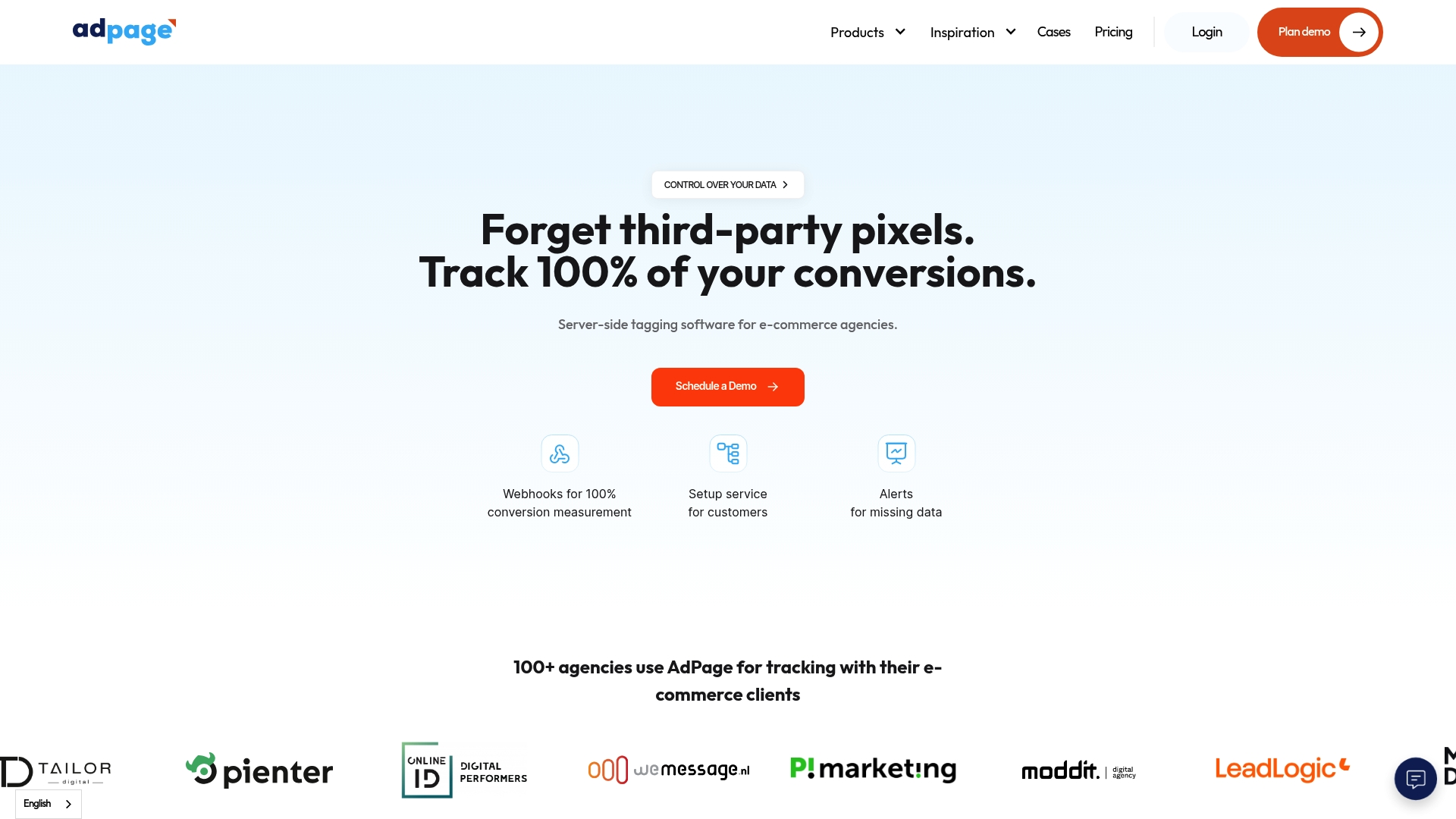Brands now use visitor identity tracking to spot exactly who visits their website, collecting technical clues like device details and browsing patterns. It sounds high-tech and complex, but here is something that stands out. Digital fingerprinting can identify users with up to 99 percent accuracy across multiple visits. Most people focus on cookies and analytics, but this precision tool is quietly shaping every online experience in ways you might not expect.
Tabla de contenido
- What Is Visitor Identity Tracking?
- The Importance Of Visitor Identity Tracking For Businesses
- How Visitor Identity Tracking Works: Key Concepts
- Practical Applications Of Visitor Identity Tracking In E-Commerce
- Challenges And Considerations In Visitor Identity Tracking
Resumen rápido
| Llevar | Explicación |
|---|---|
| Visitor identity tracking enhances user understanding | Businesses can create detailed profiles of unique users, improving targeting and personalization. |
| Precision in tracking increases marketing effectiveness | Accurate visitor tracking can boost marketing ROI by allowing for more effective targeting strategies. |
| Economic benefits from targeted marketing strategies | Understanding user characteristics can lead to reduced acquisition costs and increased marketing efficiency. |
| Privacy compliance is essential for data collection | Companies must navigate regulations and ensure transparent user consent to maintain trust and avoid legal issues. |
| Dynamic profiles improve user engagement | Continuous data analysis allows businesses to adapt and refine user experiences in real-time, enhancing satisfaction. |
What is Visitor Identity Tracking?
Visitor identity tracking represents a sophisticated digital strategy for understanding and identifying unique website visitors through advanced data collection techniques. Learn more about visitor tracking methods that transform raw user interactions into meaningful insights.
Comprender el Mecanismo Central
At its fundamental level, visitor identity tracking involves creating a comprehensive digital fingerprint for each website user by collecting multiple data points. These data points typically include technical attributes such as:
- Browser type and version
- Operating system details
- IP address characteristics
- Device specifications
- Unique browser or device identifiers
By aggregating these technical signals, businesses can construct a nuanced profile that distinguishes one visitor from another with remarkable precision. According to Carnegie Mellon University’s CyLab, digital fingerprinting techniques can identify unique users with up to 99% accuracy across multiple web sessions.
Technological Framework and Implementation
The technological infrastructure behind visitor identity tracking relies on sophisticated tracking scripts, cookies, and server-side algorithms. These systems continuously collect and analyse user interaction data, creating a dynamic profile that evolves with each website engagement.
Key tracking technologies include:
- Browser Cookies: Traditional tracking mechanism storing user-specific information
- Fingerprinting Scripts: Advanced techniques capturing unique device characteristics
- Session Tracking: Monitoring user interactions and navigation patterns
Unlike generic website analytics, visitor identity tracking provides granular insights into individual user behaviour, enabling businesses to personalise experiences, predict user needs, and optimize conversion strategies with unprecedented accuracy.
To clarify the main tracking technologies used in visitor identity tracking, the following table outlines their definitions and primary functions.
| Tecnología | Definición | Primary Function |
|---|---|---|
| Browser Cookies | Small data files stored in a visitor’s browser | Store user-specific information for tracking |
| Fingerprinting Scripts | Scripts that capture unique device and browser attributes | Identify users without relying on cookies |
| Seguimiento de la sesión | Monitoring user interactions during a single website session | Analyse navigation patterns and user behaviour |
| Persistent Cookies | Cookies that remain on a user’s device beyond the session | Enable recognition across multiple visits |
| Seguimiento del lado del servidor | Data captured directly on web servers | Aggregate and process interaction data reliably |
| Fingerprinting Algorithms | Algorithms combining device, network, and behavioural information | Construct robust, unique user profiles |
The Importance of Visitor Identity Tracking for Businesses
Visitor identity tracking has emerged as a critical strategic tool for businesses seeking to understand and optimise their digital interactions. Read more about data tracking challenges and discover how sophisticated tracking transforms business intelligence.
Strategic Business Intelligence and Customer Understanding
In the contemporary digital marketplace, understanding individual user behaviour is not just advantageous but essential. According to research from Harvard Business Review, companies leveraging detailed visitor tracking can increase their marketing effectiveness by up to 40% through personalised engagement strategies.

Businesses benefit from visitor identity tracking through multiple strategic dimensions:
- Enhanced customer segmentation capabilities
- Precise targeting of marketing communications
- Improved conversion rate optimization
- More accurate predictive customer behaviour modelling
Economic and Operational Advantages
Visitor identity tracking provides substantial economic benefits by enabling businesses to:
- Reduce Customer Acquisition Costs: By understanding precise user characteristics and preferences
- Increase Marketing Efficiency: Through targeted, data-driven campaign strategies
- Minimize Wasteful Advertising Spend: By focusing resources on high-potential customer segments
Companies that effectively implement visitor tracking can transform raw digital interactions into actionable strategic insights, creating more responsive and intelligent business models. The ability to understand individual user journeys allows organizations to design more compelling digital experiences that directly address user needs and preferences.
How Visitor Identity Tracking Works: Key Concepts
Visitor identity tracking encompasses sophisticated technological processes designed to capture, analyse, and interpret user interactions across digital platforms. Explore key web tracking insights for marketers to understand the intricate mechanisms behind modern digital identification strategies.
Data Collection and Signal Aggregation
The foundational mechanism of visitor identity tracking involves collecting multiple digital signals that collectively create a unique user profile. According to Internet Engineering Task Force privacy guidelines, these signals typically include:
- Technical Identifiers: Browser type, version, screen resolution
- Network Information: IP address, geolocation data
- Interaction Patterns: Click sequences, time spent on pages
- Device Characteristics: Operating system, hardware specifications
By aggregating these diverse data points, tracking systems construct a comprehensive digital fingerprint that can distinguish individual users with remarkable precision.
Tracking Technologies and Methodologies
Modern visitor identity tracking relies on multiple interconnected technologies that work synergistically to capture and analyse user data:
- Persistent Cookies: Store unique identifiers in user browsers
- Server-Side Tracking: Capture interactions directly on web servers
- Fingerprinting Algorithms: Generate unique user profiles based on device characteristics
These technologies enable businesses to create dynamic user profiles that evolve with each digital interaction, providing increasingly nuanced insights into individual user behaviour and preferences. The sophisticated algorithms underlying these systems transform raw data into actionable intelligence, allowing for unprecedented levels of digital user understanding.
Practical Applications of Visitor Identity Tracking in E-Commerce
Visitor identity tracking represents a transformative technology for e-commerce platforms, enabling unprecedented levels of personalisation and strategic customer engagement. Explore the future of e-commerce tracking to understand how advanced tracking methodologies revolutionise online retail strategies.
Personalisation and Customer Experience Enhancement
In the competitive e-commerce landscape, visitor identity tracking provides businesses with powerful tools to create tailored shopping experiences. According to research from Stanford University, personalised digital experiences can increase customer conversion rates by up to 35%.
E-commerce platforms leverage visitor tracking for sophisticated personalisation strategies:
- Dynamic product recommendations based on browsing history
- Customised homepage content reflecting individual preferences
- Personalised pricing and promotional offers
- Targeted email marketing campaigns
Conversion Optimization and Revenue Generation
Visitor identity tracking enables e-commerce businesses to implement strategic interventions that directly impact revenue generation:
- Abandoned Cart Recovery: Tracking user behaviour to understand and mitigate purchase barriers
- Predictive Analytics: Anticipating customer needs and proactively presenting relevant products
- Customer Segmentation: Creating precise marketing strategies for different user groups
- Retention Strategy: Understanding long-term customer value and engagement patterns
By transforming raw digital interactions into actionable insights, e-commerce platforms can create more intelligent, responsive shopping environments that adapt in real-time to individual user preferences and behaviours.

Challenges and Considerations in Visitor Identity Tracking
Visitor identity tracking presents complex technological and ethical considerations that demand sophisticated strategic approaches. Explore how cookies affect tracking in 2025 to understand the evolving landscape of digital privacy and tracking technologies.
Privacidad y cumplimiento de la normativa
Navigating the intricate landscape of digital privacy requires businesses to maintain a delicate balance between data collection and user consent. According to European Data Protection Board guidelines, organisations must implement transparent mechanisms that respect user autonomy and provide clear opt-out options.
Key privacy compliance considerations include:
- Mecanismos explícitos de consentimiento del usuario
- Clear communication about data collection practices
- Comprehensive data protection protocols
- Secure data storage and management strategies
Technical and Ethical Limitations
Visitor identity tracking encounters multiple technical and ethical challenges that organisations must proactively address:
- Browser Restrictions: Increasing privacy settings limiting tracking capabilities
- User Consent Fragmentation: Diverse global regulatory environments
- Technology Limitations: Emerging privacy-protecting technologies
- Ethical Data Usage: Maintaining trust while gathering insights
Successful implementation requires a nuanced approach that prioritises user trust, technological adaptability, and responsible data management. Organisations must continuously evolve their tracking strategies to balance business intelligence with robust privacy protections.
This table summarises key challenges and considerations associated with visitor identity tracking, helping businesses recognise areas that require careful attention for successful and compliant implementation.
| Challenge/Consideration | Descripción |
|---|---|
| Privacy Compliance | Ensuring data collection respects user consent and regulatory requirements |
| Browser Restrictions | Adapting to increased privacy controls that limit tracking capabilities |
| User Consent Fragmentation | Managing diverse, global approaches to data permission and opt-out standards |
| Technology Limitations | Addressing developments in privacy-protecting technology that restrict traditional tracking |
| Ethical Data Usage | Maintaining user trust through responsible handling and clear communication of data use |
| Secure Data Storage | Protecting collected data from breaches and unauthorised access |
Unleash the Full Power of Visitor Identity Tracking with AdPage
Are your e-commerce campaigns suffering from hidden data gaps, unreliable tracking, or lost conversions? You have just explored how visitor identity tracking unlocks advanced understanding of individual behaviours. Yet, traditional analytics often fail to capture the precision your business demands. With digital privacy concerns and browser restrictions increasing, you need a solution that empowers control and accuracy while keeping compliance at the heart of your strategy.

Experience transformative results today with AdPage. Our platform combines server-side tagging, complete consent management and real visitor identity services so you can optimise every touchpoint and restore 100% conversion visibility. It is designed for marketing agencies and online retailers that cannot afford guesswork. Ready to upgrade your tracking and maximise conversions from your next campaign? Visit AdPage now and see the difference advanced tracking makes for your business.
Preguntas frecuentes
What is visitor identity tracking?
Visitor identity tracking is a digital strategy used to identify and understand unique website visitors by creating a comprehensive profile based on various data points, such as browser type, operating system, and device specifications.
How does visitor identity tracking improve customer engagement?
By leveraging visitor identity tracking, businesses can personalise user experiences, target marketing communications effectively, and optimise conversion strategies, ultimately enhancing customer engagement and satisfaction.
What are the key technologies used in visitor identity tracking?
Key technologies include browser cookies, fingerprinting scripts, and server-side tracking algorithms, all of which help collect and analyse user interaction data to build dynamic user profiles.
What challenges do businesses face with visitor identity tracking?
Businesses encounter challenges such as ensuring privacy compliance, managing user consent, dealing with browser restrictions, and addressing ethical considerations related to data usage.



.png)
